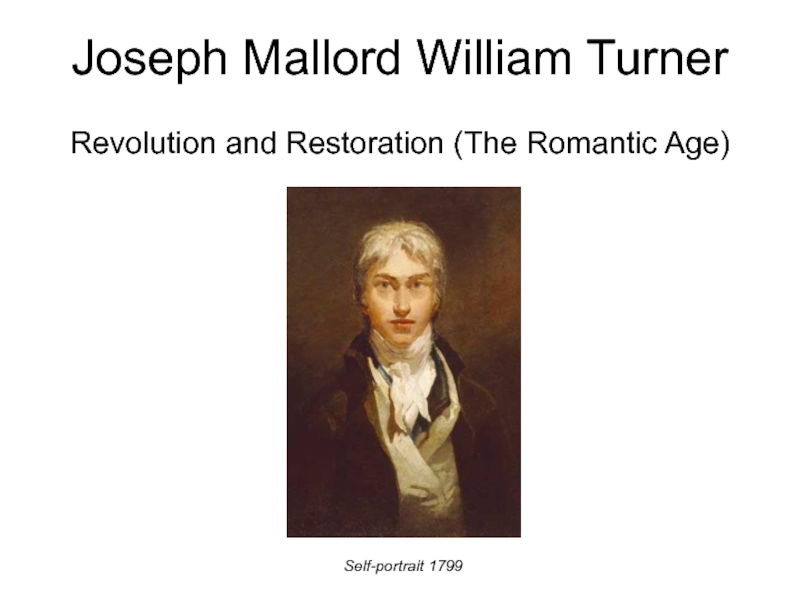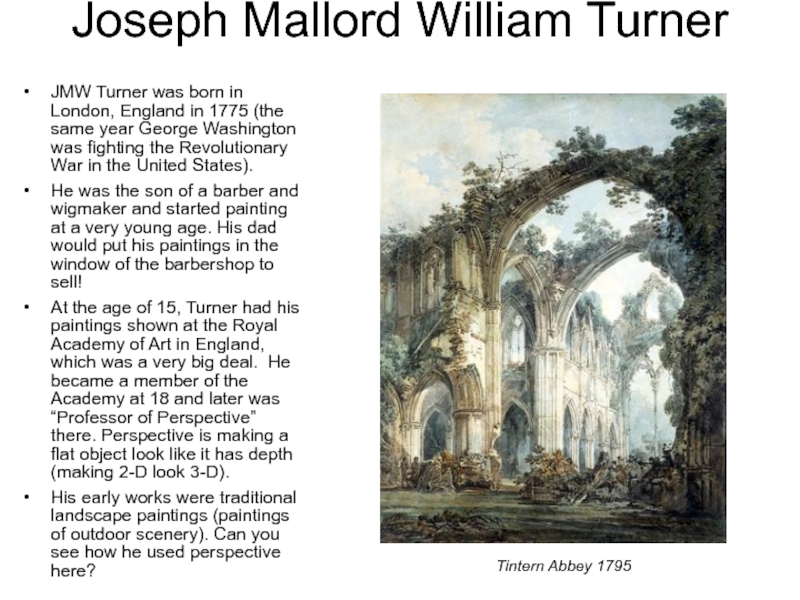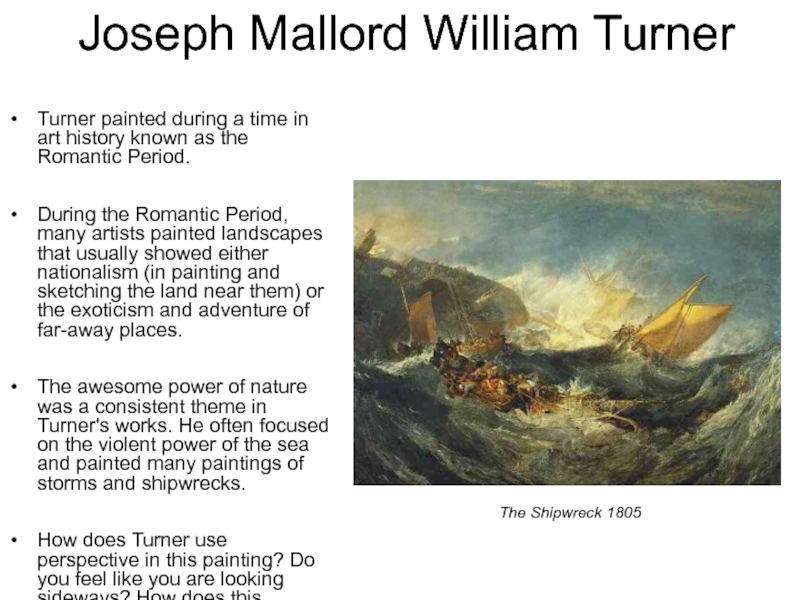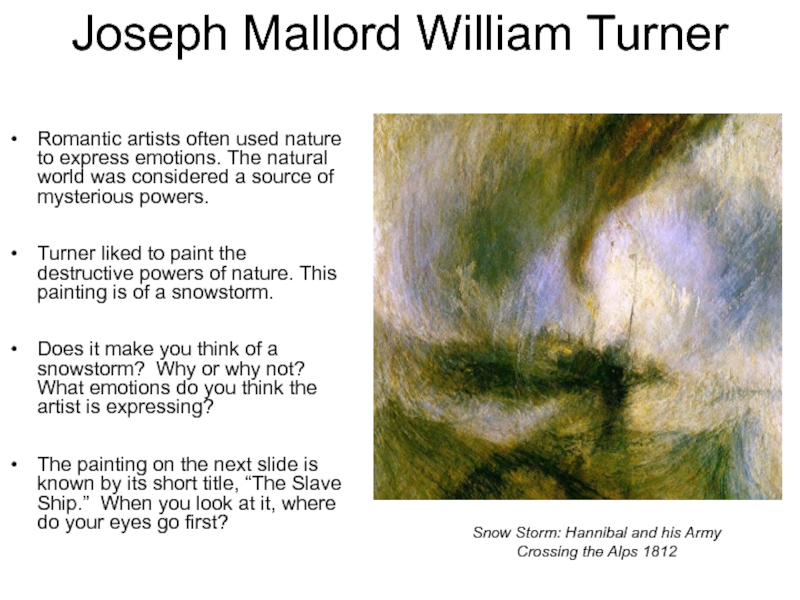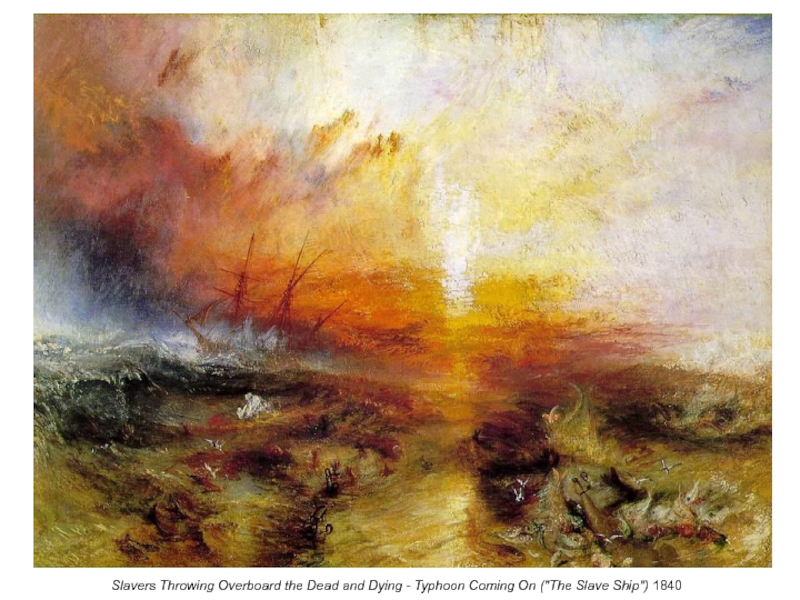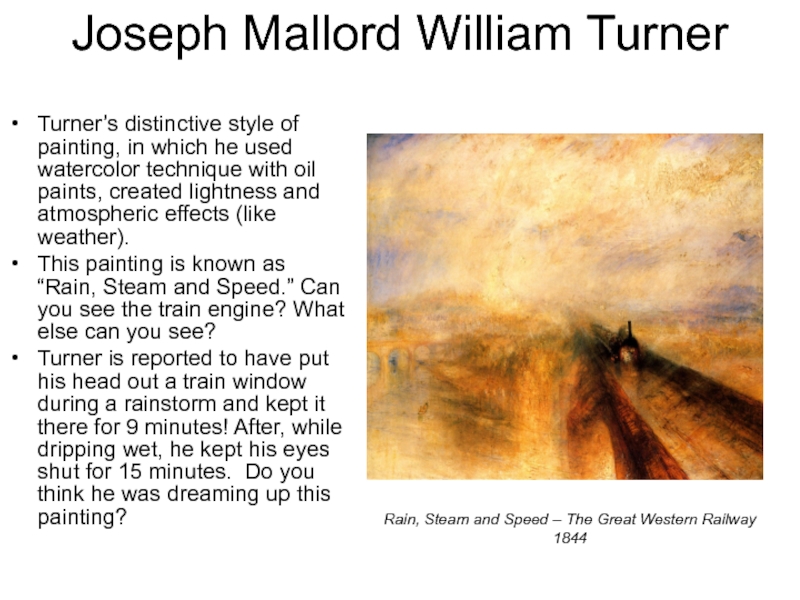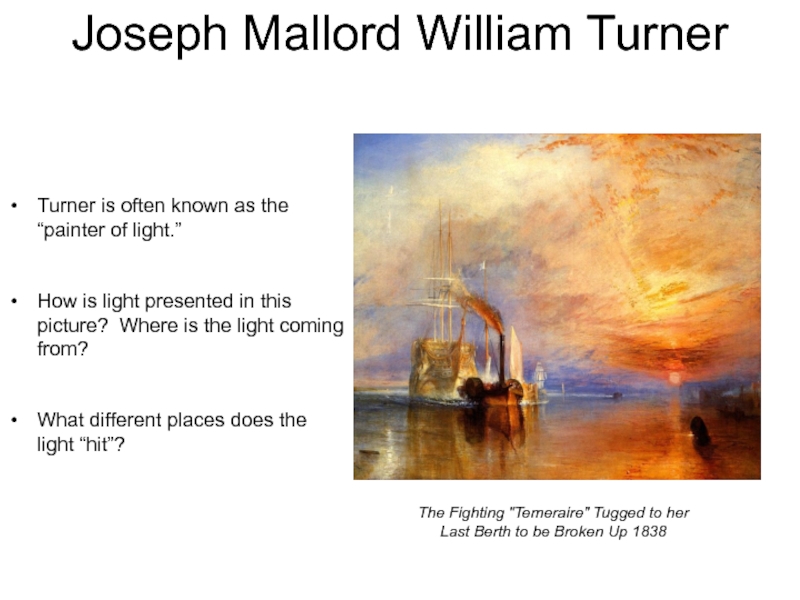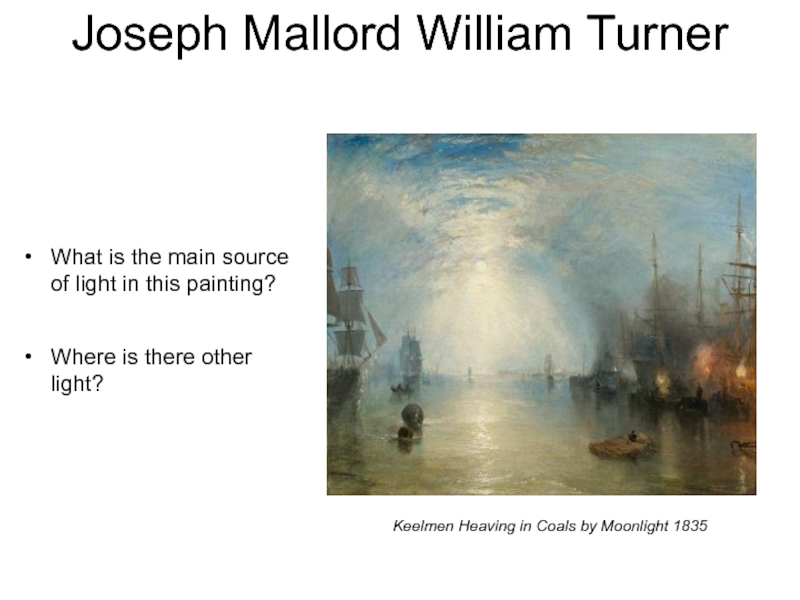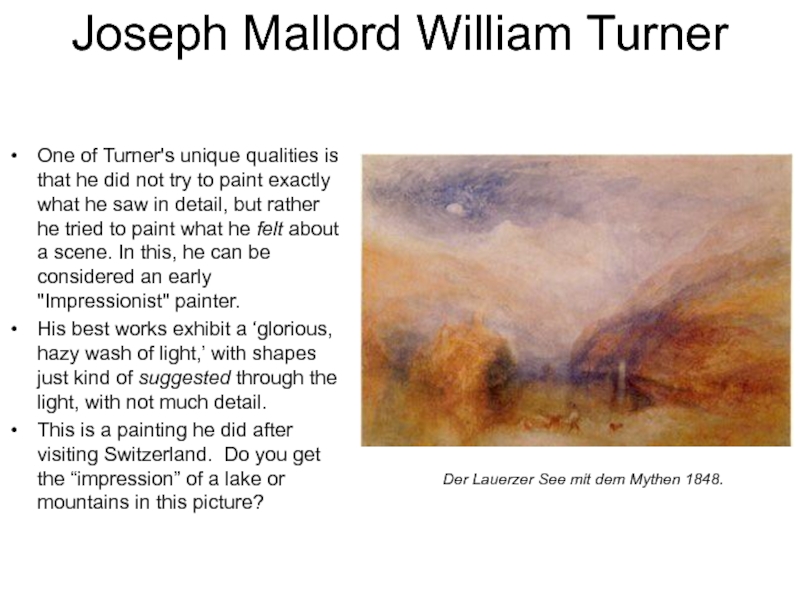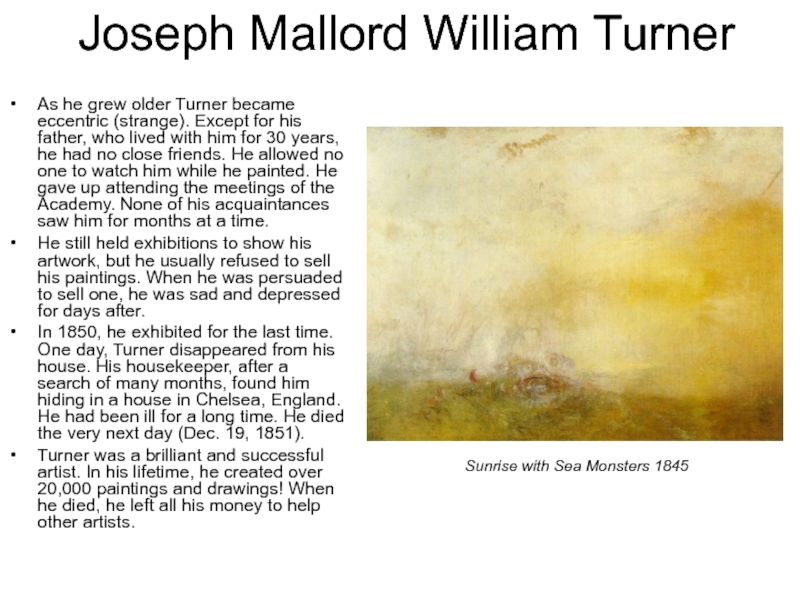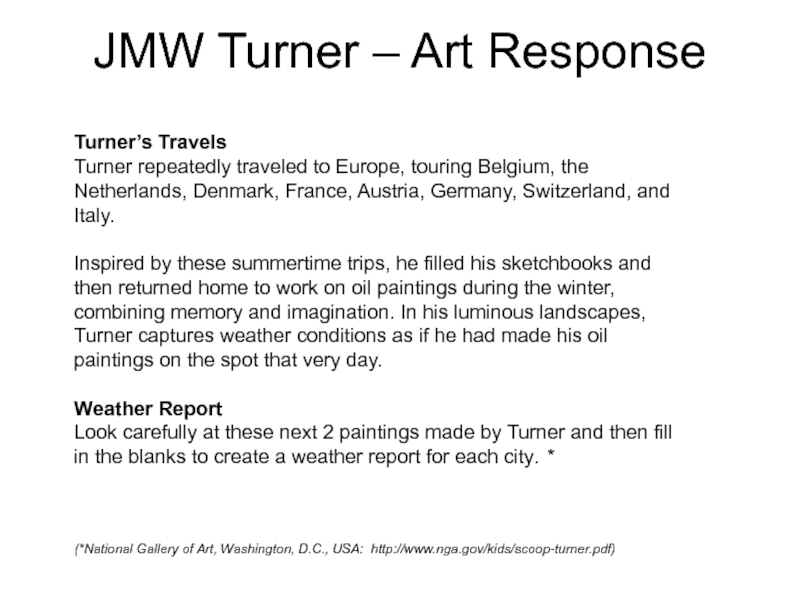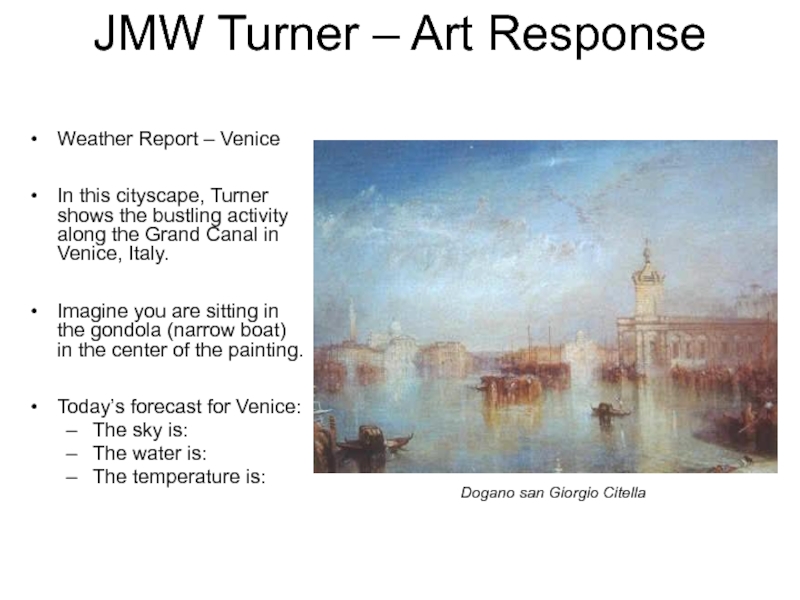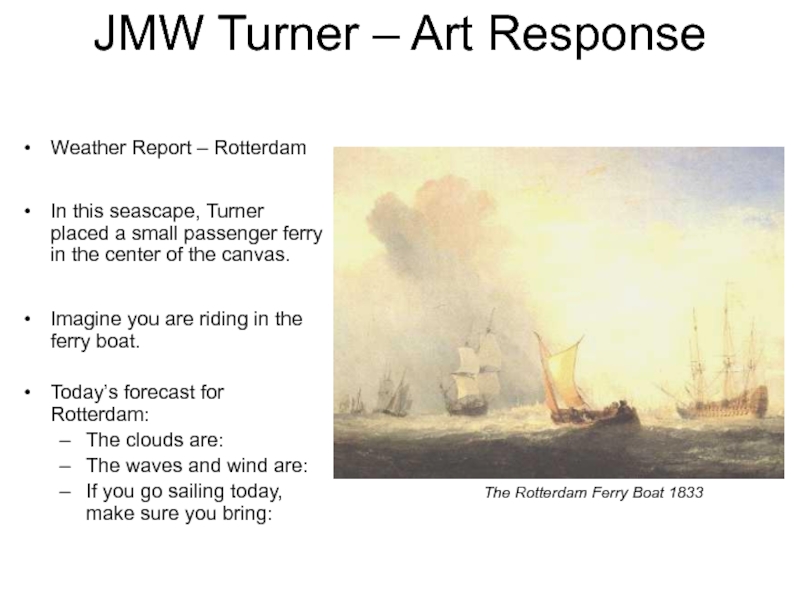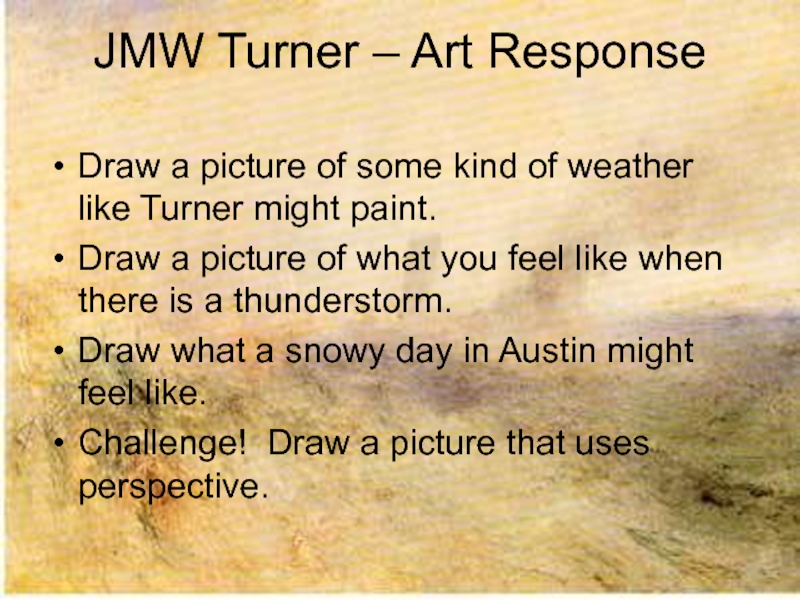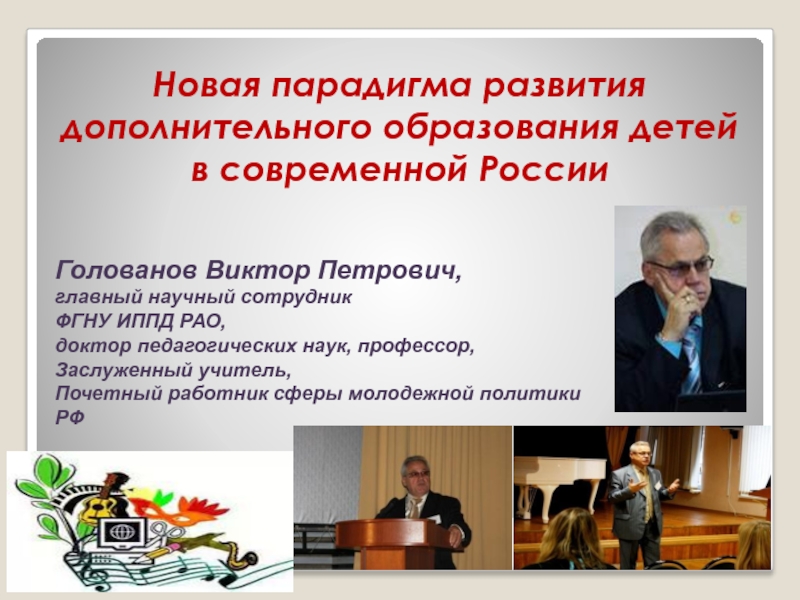- Главная
- Разное
- Дизайн
- Бизнес и предпринимательство
- Аналитика
- Образование
- Развлечения
- Красота и здоровье
- Финансы
- Государство
- Путешествия
- Спорт
- Недвижимость
- Армия
- Графика
- Культурология
- Еда и кулинария
- Лингвистика
- Английский язык
- Астрономия
- Алгебра
- Биология
- География
- Детские презентации
- Информатика
- История
- Литература
- Маркетинг
- Математика
- Медицина
- Менеджмент
- Музыка
- МХК
- Немецкий язык
- ОБЖ
- Обществознание
- Окружающий мир
- Педагогика
- Русский язык
- Технология
- Физика
- Философия
- Химия
- Шаблоны, картинки для презентаций
- Экология
- Экономика
- Юриспруденция
Joseph Mallord William Turner. Revolution and Restoration (The Romantic Age) презентация
Содержание
- 1. Joseph Mallord William Turner. Revolution and Restoration (The Romantic Age)
- 2. Joseph Mallord William Turner JMW Turner was
- 3. Joseph Mallord William Turner Turner painted during
- 4. Joseph Mallord William Turner Romantic artists often
- 5. Slavers Throwing Overboard the Dead and Dying
- 6. Joseph Mallord William Turner Turner’s distinctive
- 7. Joseph Mallord William Turner Turner
- 8. Joseph Mallord William Turner What is the
- 9. Joseph Mallord William Turner One of Turner's
- 10. Joseph Mallord William Turner As he grew
Слайд 2Joseph Mallord William Turner
JMW Turner was born in London, England in
He was the son of a barber and wigmaker and started painting at a very young age. His dad would put his paintings in the window of the barbershop to sell!
At the age of 15, Turner had his paintings shown at the Royal Academy of Art in England, which was a very big deal. He became a member of the Academy at 18 and later was “Professor of Perspective” there. Perspective is making a flat object look like it has depth (making 2-D look 3-D).
His early works were traditional landscape paintings (paintings of outdoor scenery). Can you see how he used perspective here?
Tintern Abbey 1795
Слайд 3Joseph Mallord William Turner
Turner painted during a time in art history
During the Romantic Period, many artists painted landscapes that usually showed either nationalism (in painting and sketching the land near them) or the exoticism and adventure of far-away places.
The awesome power of nature was a consistent theme in Turner's works. He often focused on the violent power of the sea and painted many paintings of storms and shipwrecks.
How does Turner use perspective in this painting? Do you feel like you are looking sideways? How does this painting make you feel?
The Shipwreck 1805
Слайд 4Joseph Mallord William Turner
Romantic artists often used nature to express emotions.
Turner liked to paint the destructive powers of nature. This painting is of a snowstorm.
Does it make you think of a snowstorm? Why or why not? What emotions do you think the artist is expressing?
The painting on the next slide is known by its short title, “The Slave Ship.” When you look at it, where do your eyes go first?
Snow Storm: Hannibal and his Army Crossing the Alps 1812
Слайд 5Slavers Throwing Overboard the Dead and Dying - Typhoon Coming On
Slavers Throwing Overboard the Dead and Dying - Typhoon Coming On ("The Slave Ship") 1840
Слайд 6Joseph Mallord William Turner
Turner’s distinctive style of painting, in which he
This painting is known as “Rain, Steam and Speed.” Can you see the train engine? What else can you see?
Turner is reported to have put his head out a train window during a rainstorm and kept it there for 9 minutes! After, while dripping wet, he kept his eyes shut for 15 minutes. Do you think he was dreaming up this painting?
Rain, Steam and Speed – The Great Western Railway 1844
Слайд 7Joseph Mallord William Turner
Turner is often known as the “painter of
How is light presented in this picture? Where is the light coming from?
What different places does the light “hit”?
The Fighting "Temeraire" Tugged to her
Last Berth to be Broken Up 1838
Слайд 8Joseph Mallord William Turner
What is the main source of light in
Where is there other light?
Keelmen Heaving in Coals by Moonlight 1835
Слайд 9Joseph Mallord William Turner
One of Turner's unique qualities is that he
His best works exhibit a ‘glorious, hazy wash of light,’ with shapes just kind of suggested through the light, with not much detail.
This is a painting he did after visiting Switzerland. Do you get the “impression” of a lake or mountains in this picture?
Der Lauerzer See mit dem Mythen 1848.
Слайд 10Joseph Mallord William Turner
As he grew older Turner became eccentric (strange).
He still held exhibitions to show his artwork, but he usually refused to sell his paintings. When he was persuaded to sell one, he was sad and depressed for days after.
In 1850, he exhibited for the last time. One day, Turner disappeared from his house. His housekeeper, after a search of many months, found him hiding in a house in Chelsea, England. He had been ill for a long time. He died the very next day (Dec. 19, 1851).
Turner was a brilliant and successful artist. In his lifetime, he created over 20,000 paintings and drawings! When he died, he left all his money to help other artists.
Sunrise with Sea Monsters 1845
